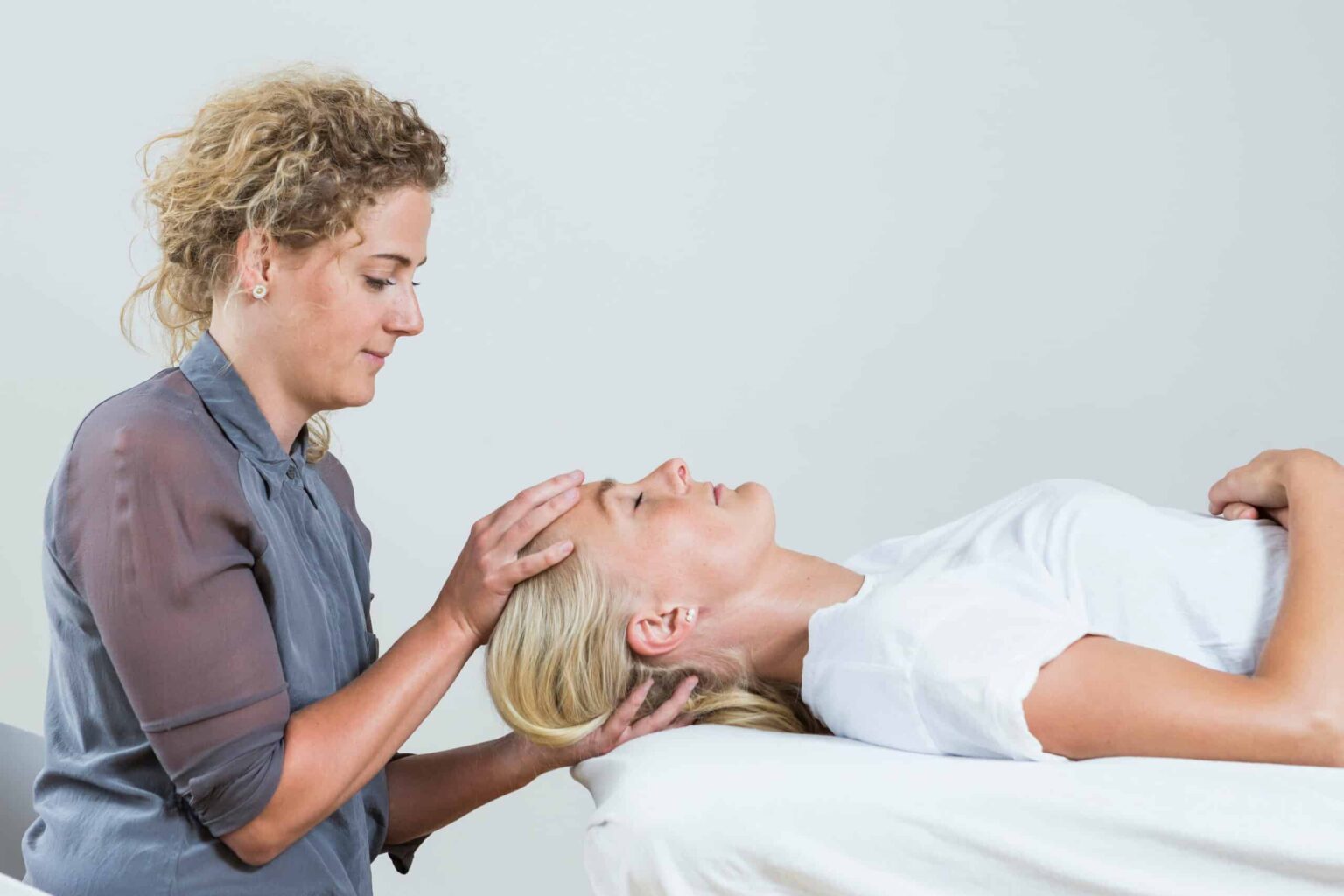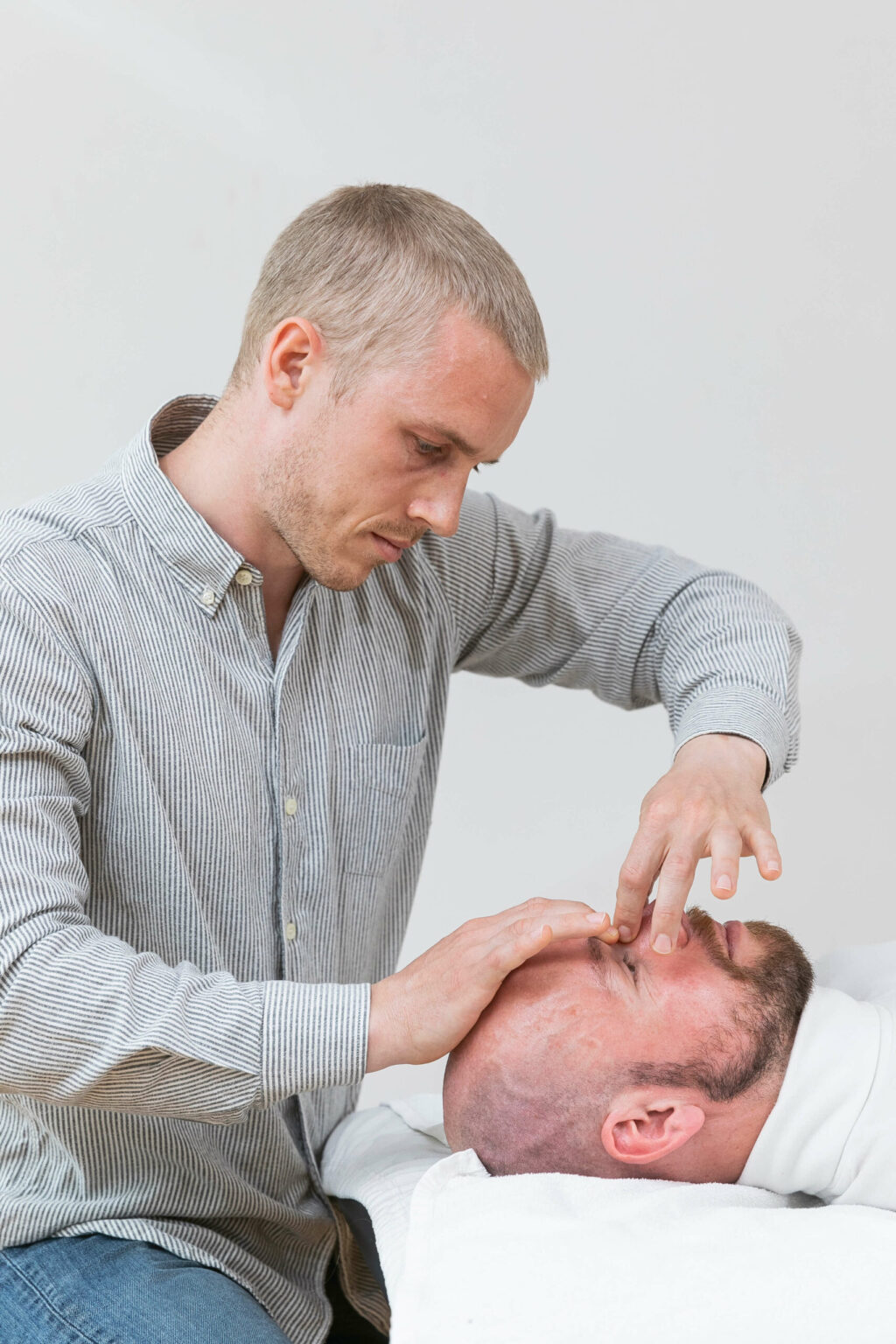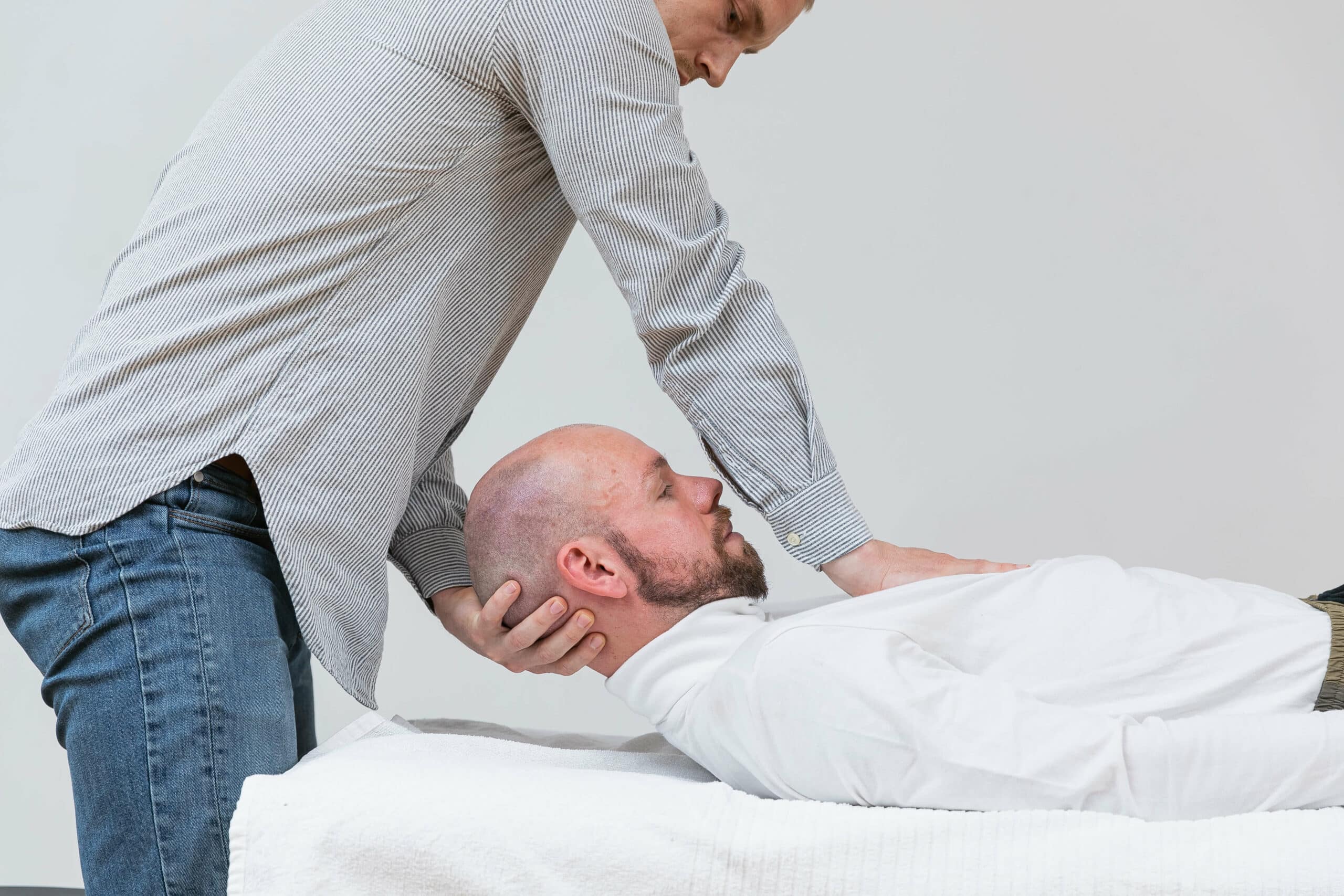We treat
Sinusitis
Learn more about sinusitis and its treatment
What is sinusitis?
Sinusitis, in technical terms called sinusitis frontalis, is an inflammation of the frontal sinuses which are located in the forehead above the eyebrows. People affected by colds are more prone to inflammation of the sinuses.
The frequency of sinusitis varies from person to person, but various factors can influence the occurrence, such as the state of the immune system, environmental influences, and anatomical variations.
Jump to section [Vis]
How often does sinusitis occur?
In general, sinusitis is a common condition that can occur after a cold caused by a virus or bacteria. Sinusitis is divided into an acute and chronic condition:
Acute sinusitis occurs as described as a result of a viral/bacterial infection or allergic reactions. It is often associated with colds or flu. The frequency increases in cases of smoking, close contact with infected people or exposure to environmental influences.
Chronic sinusitis occurs after 12 weeks of symptoms and is less common. This can be more challenging to treat and can have a significant impact on quality of life.
If a person experiences repeated episodes of sinusitis or chronic sinusitis, it may be appropriate to seek advice from a healthcare professional for a thorough evaluation and treatment plan.
Sources: Sundhed.dk & National Library of Medicine

What are sinuses?
Sinuses are air-filled cavities in the skull that are lined with mucous membranes – these cavities are also called sinuses. The cavities are connected to the nasal cavity and serve several purposes, including facilitating airflow, moisture regulation, reducing the weight of the skull, and resonating the voice. The four main cavities in humans are:
- Frontal sinuses (located in the forehead)
- The eye sockets (between the eyes)
- The sinuses (in the cheekbones)
- Sphenoidal sinuses (deep in the skull).
Inflammatory conditions occur when these cavities become blocked and unable to drain, which can cause symptoms such as facial pain, headaches and nasal congestion. When the drainage of these cavities/sinuses is blocked, pressure in the cavities increases, which can cause pain/discomfort and dizziness.
Symptoms of sinusitis include:
– Facial pain or a feeling of pressure in the forehead
– Headache
– Nasal congestion and purulent nasal discharge.
– Dizziness
– Mild fever
– Visual disturbances may occur periodically
Sources: Medscape & Medical News Today

Several factors can increase the risk of developing sinusitis
– Infections
Viruses or bacteria that cause colds or other upper respiratory infections can contribute to the development of sinusitis.
– Allergies
People with allergies are at increased risk of sinusitis, as allergens can cause inflammation and blockage of the sinuses.
– Anatomical abnormalities
Structural variations in the nasal cavity or sinuses can increase the risk of inflammation and infection.
– Reduced immune system
People with weakened immune systems generally have a higher risk of infections, including sinusitis.
– Smoking
Tobacco smoke and other air pollution can irritate the mucous membranes and increase the risk of inflammation.
It is important to note that sinusitis can vary in severity. If someone experiences repeated or persistent problems with sinusitis, it is recommended to seek advice from a healthcare professional for an accurate diagnosis and appropriate treatment.
How can I avoid (prevent) sinusitis?
The most important thing regarding the prevention of sinusitis is to ensure that the sinuses are not blocked and have optimal drainage opportunities.
In addition to using nasal spray and/or regularly rinsing the sinuses, various exercises can be used, for example, to influence the trigeminal nerve, optimize the mobility between the cranial surfaces of the face and the transition between the skull and the cervical vertebrae, which can have a good effect on the drainage of the cavities.
In addition, you can ensure that:
– Drink enough water as this helps the mucous membranes. As a rule of thumb, your own height + 0.5 l per day (for example, a person of 1.80 m. is recommended to drink 1.8 l + 0.5 l = 2.3 l of fluid per day)
– Vitamins, minerals, fish oil and possibly lactic acid bacteria (for the intestinal flora and mucous membranes).
– Limit too much lactose, gluten and starch. Build a large part of your diet with vegetables.
– Lie with your head elevated. This optimizes the pressure in the sinuses.
– Inhale steam or moisture. This helps drain the sinuses.
– Nasal spray or nasal irrigation. This helps with ventilation in the sinuses.
– Hygiene.
– Reduce stress and prioritize sleep

The treatment of sinusitis
It is important to consult a healthcare professional for an accurate diagnosis and a treatment plan that is appropriate for the specific situation.
Self-treatment should be closely monitored, and any persistent or worsening symptoms should be consulted by a doctor.
As a general rule, however, there are the following treatment options for sinusitis:
- Painkillers: Paracetamol or ibuprofen can relieve pain and reduce fever (Consult your doctor).
- Nasal sprays with decongestants: Nasal sprays can help reduce nasal congestion and improve breathing. Long-term use should be avoided to prevent side effects such as addiction.
- Nasal irrigation with a saline solution: This can help remove excess mucus and relieve symptoms.
- Antibiotics: If the sinusitis is caused by a bacterial infection, your doctor may prescribe antibiotics. For viral infections, antibiotics will not be effective.
- Heat: On the affected area, heat can relieve pain and promote drainage of mucus.
- Rest: As well as avoiding physical exertion can help the immune system fight the infection.
Osteopathy can help optimize conditions around the sinuses and increase drainage of congestion – doing this through a multifactorial approach to causation.
Osteopathic approach to sinusitis
We are experts in finding the cause(s) of sinusitis.
We examine and treat all systems in the body; musculoskeletal system (muscles, tendons, joints, etc.), nervous system, blood system (arteries, veins and lymphatic system), craniosacral system, hormonal and metabolic system, etc.
In addition to the common advice that you can read here in this section, we will address the factors that have congenitally impaired ventilation and drainage of the sinuses.
- Osteopathy treats the skull/face if there has been a history of head trauma, which may result in reduced mobility between the skull surfaces.
- We treat the neurovascular structures, that is, the nerves and blood vessels to and from the sinuses, precisely to create better physiological conditions to/from the sinuses.
- The immune system and mucous membranes are optimized by focusing on the digestive system and guiding you towards an optimal lifestyle.
In addition, you will receive effective exercises and advice that you can use yourself both as treatment and prevention for sinusitis.

Often related problems

Jaw joint pain

Brain hemorrhage

Post-traumatic headache

Sinusitis

Tinnitus

Vestibular dysfunction

Maxillary sinusitis

